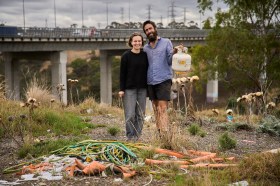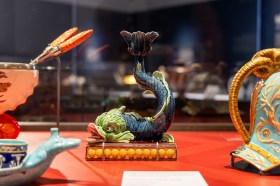Artistic Director for the 5th National Indigenous Art Triennial, Tony Albert (Girramay/Yidinji/Kuku-Yalanji peoples), has announced today (10 April) his artist list for the exhibition, presented by the National Gallery of Australia.
He has taken a slightly different approach, choosing to shape out the narratives in this exhibition across 10 new immersive, multidisciplinary projects. These installations are aimed at celebrating, “inter-generational legacies and cultural warriors of the past, present and future,” according to the Gallery.
Albert added in a formal statement: “For the Triennial, I made the conscious decision to work with artists to commission fewer projects, on a more expansive scale, and challenge everyone to come and sit, and think – resonate, or respond – to where I am sitting and thinking.”
The theme of the Triennial is ‘After the Rain’, and artists range from collectives such as Yarrenyty Arltere Artists (Girramay/Yidinji/Kuku-Yalanji peoples), Hermannsburg Potters and Itja Ntjarra (Many Hands) Art Centre, to individual artists working on Country like Alair Pambegan (Wik-Mungkan people), Grace Kemarre Robinya (Western Arrernta/Arrernte/Luritja/Anmatyerr peoples) and Erub artist Jimmy John Thaiday (Kuz/Peiudu peoples of Torres Strait Islands).

Albert will anchor his Triennial with senior, globally celebrated artists like Vincent Namatjira, along with his grandfather, Vincent Namatjira’s works, Naminapu Maymuru-White (Maŋgalili people), whose works were recently acquired by London’s Tate gallery and Warraba Weatherall (Kamilaroi people), who currently has a survey exhibition at the Museum of Contemporary Art Australia.

And an exciting edge is the inclusion of younger generation of artists, Aretha Brown (Gumbaynggirr people), Thea Anamara Perkins (Arrernte/Kalkadoon peoples), Dylan Mooney (Yuwi people/Torres Strait and South Sea Islander) and Troy Casey (Kamilaroi people) and Amanda Hayman (Kalkadoon/Wakka Wakka peoples) of Blaklash.
Read: The 2025 art fair calendar
This is Albert’s second major biennale exhibition outing as a curator, having worked on the 2024 Biennale of Sydney as the Inaugural Fondation Cartier pour l’art contemporain First Nations Curatorial Fellow. Mooney was one of the artists Albert selected for that event, and his work will again be visited in depth.
The 5th National Indigenous Art Triennial opens at the NGA on 6 December and runs through to 26 April 2026, before travelling nationally through 2026-2027. The Triennial is supported by First Nations Arts Partner Wesfarmers Arts. It is a free exhibition.





